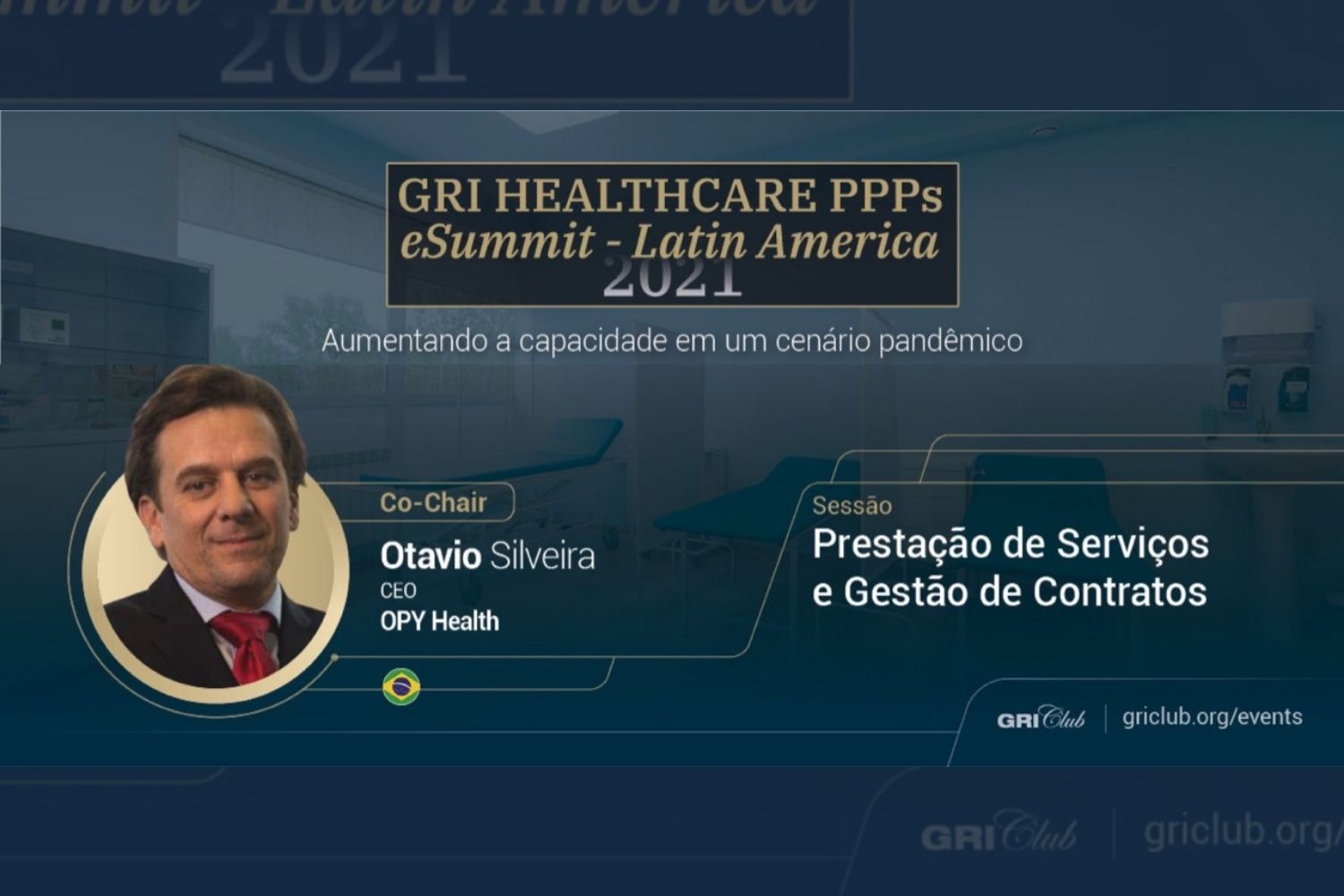
The event discussed the challenges faced by public and private entities to implement the model in Brazil and Latin America
Otávio Silveira, CEO of Opy Health, was one of the co-chairs of GRI Healthcare PPPs eSummit, a forum held by GRI Club on April 27-29 with participants from different countries in Latin America and Spain who addressed the synergies between companies and governments to formulate PPP (Public-Private Partnership) strategies in the healthcare sector.
Participants shared their experiences and insights about implementing a PPP model in Latin America and talked about associated challenges and opportunities.
Transparency in PPPs and obstacles to making it a less politicized discussion were two of the major topics addressed, as well as the starting point that guided the conversation. The CEO of Opy Health explained that, in Brazil, for example, this discussion involves the difference between private participation and privatization. Brazilian Constitution does not allow Healthcare privatization in Brazil.
“In this segment, the government is responsible for defining the hierarchy of institutions in the network, the patients’ journey, and healthcare service policies”. Silveira also recalls that private participation in healthcare service provision has always been a reality through OSs (Social Organizations) or even engagement of private companies for different purposes and that PPPs have been created only to improve engagement and align the interests of public and private entities to deliver more effective services to the public.
Silveira talked about the need to share PPP results with society. “We always show our patients, partners, suppliers, other sectors and audiences the excellent service we provide in the assets we manage, as well as how our management of non-medical services focuses on continuous improvements in the present moment and throughout the entire useful life of the PPP, with the same level of efficiency”.
The CEO also addressed how this partnership model between companies and the government provides public entities with rapid leverage for infrastructure investments. He also discussed the predictability provided by PPPs, in which each party has well-defined responsibilities.
“The risk and responsibility matrix of each party in a PPP has to be well defined. Likewise, contracts must establish the volume of investments required, not only during asset implementation, but also throughout its operation, anticipating the need to make infrastructure improvements over time, such as providing cutting-edge equipment and technologies not available until then, enabling technological advances. Being flexible is the key to a successful partnership”, he noted.
GRI Healthcare PPPs eSummit was a 3-day event attended by representatives of public and private initiatives from countries such as Brazil, Chile, Colombia, Spain, Mexico, and Peru.
